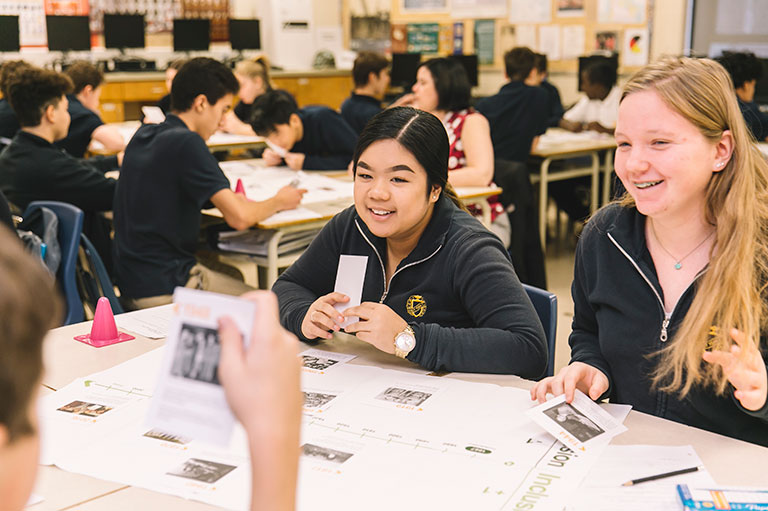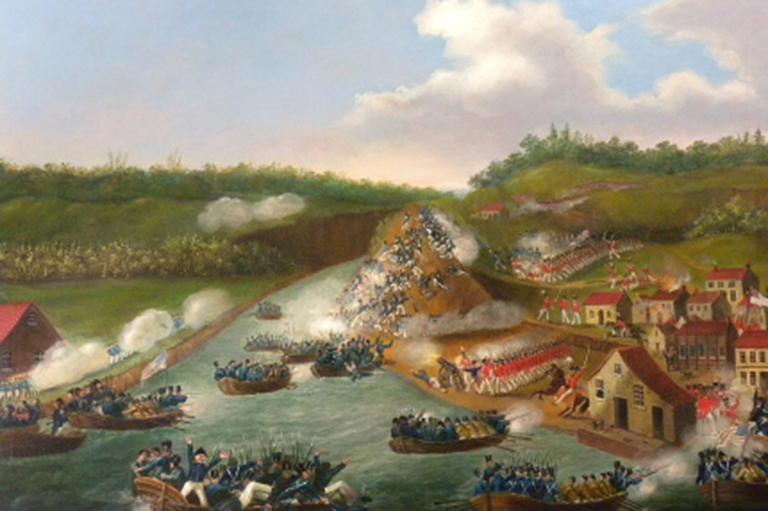Strength, Melanin, and Estrogen
Grade Levels: 3/4, 5/6, 7/8
Subject Area: Social Studies, History, Language Arts, Visual Arts
These activities are inspired by the expanded (2022) Black history in Canada issue of Kayak: Canada’s History Magazine for Kids.
The goal of these activities is to give students an opportunity to explore the role that Black women play in the great Canadian mosaic. Students will learn of the advances made by Black pioneers who paved the way for women of today. They will gain insight into the realities of Black women in Canada and their communities. By the end of these activities, they will be more aware of the importance of being involved in a community and feeling represented within it.
Activity I: The Challenges of the Under-representation of Black Women
In this activity, students will use the visual arts to understand the importance of minority groups’ representation in society.
CONTEXT:
Black Canadian women face significant challenges, as they must fight for gender equality and racial equality at the same time. They are often excluded from the conversation. To be heard, they must constantly break down barriers, making every effort not to offend anyone while proving that they deserve their seat at the table. They live in a world in which they are subjected to stigmatization. They are sometimes seen—as many women are in general—as being too demanding, too combative, and belligerent. In the workplace, they are said to be intimidating. Broadly speaking, they must work harder to earn the same promotions and recognition generally afforded to men.
Black women are still leading the way and breaking down barriers. Such is the case, for example, of Alexandra Bastiany who, in 2020, became the first Black Canadian female cardiologist.
In this activity, students will carry out some brief research on the experience of being a minority. They will see the possible consequences Black women face when they require a service but are under-represented in a group. They will analyze the long-term repercussions of this under-representation on the physical and mental health of Black Canadian women.
GET STARTED:
- Make a series of cards and, on each of them, write the name of a profession from the list below (you can also choose to explore professions in other fields):
- Judge
- Doctor
- Police Inspector
- Cardiologist
- School Principal
- Psychologist
- Journalist
- Teacher
- Social Worker (working with children)
- Store Owner
- Photographer
- Ballet Instructor
- Next, split the class into groups and give each team one of the profession cards.
- Students will carry out some brief research, a maximum of 60 minutes in duration, and consider the following questions:
- What are the responsibilities of these professionals? What powers have they been given, based on their status?
- What obstacles might racialized people meet when they need to interact with one of these professionals?
- What solutions would you suggest to these professionals to help raise their awareness of the specific needs of people in the Black community and the challenges they may encounter?
- What are the possible repercussions of this ongoing struggle on Black people’s physical and mental health?
- Based on the results of their research, ask students to create a comic strip (using a paper or digital template). They should focus on the solutions to be applied to the various problems occurring due to the lack of representation in several professions.
- Encourage students to share their work in the school community and to further dialogue.
Example of the process (DERMATOLOGIST):
Dermatologist’s responsibilities and field of expertise:
- Assess and diagnose patients’ skin-related problems
- Inform and advise patients on their condition
- Prescribe medication
Possible obstacles:
A Black woman goes to her doctor to discuss her hair loss. The dermatologist, who is not experienced in dealing with her type of hair, suggests a biopsy and several blood tests to explore some of the possible reasons for the hair loss.
Frizzy hair is generally dryer because of its curliness, and it can fall out if it is not properly maintained. It can also break if braided too tightly for a long period of time or due to the use of chemical straightening products.
The doctor, poorly informed about this type of hair, finally decides to prescribe some ointments for his patient, without really targeting the true cause of the hair loss.
How to keep abreast of the specific needs of this group:
- Attend advanced professional training workshops on various skin types.
- Consult with renowned Black professionals working in the field to further refine one’s own knowledge (hairdressers, trichology specialists, doctors, etc.).
- Do some in-depth research and reading to better understand various hair types and, more specifically, the hair care needs of Black people.
Further Reading:
- Canada’s Black population: Education, labour and resilience (Statistics Canada)
- Black Women in Canada (Canadian Centre for Policy Alternatives)
Activity II: Black Sisterhood Train
In this activity, students will identify remarkable Black women in Canadian history. They will then creatively represent, through symbolic means, these women and their achievements.
GET STARTED:
- Discuss the use of symbols as a form of representation and how the following can be considered symbols: an object, a drawing, a letter, a sign that represents an abstract idea.
- Ask students to brainstorm, or research, which universal symbols best represent the following concepts:
- Love
- Peace
- Hope
- Canada
- French Canada
- Are there other universal symbols they can think of?
- Ask students to choose a Black Canadian woman who paved the way for "her sisters" and then have them create a poster representing her. As a class, try to identify important women from multiple Canadian provinces/territories.
- For their poster, students should present the main achievements and essence of who their selection was/is through carefully selected symbols and words related to her contributions.
- Once the project is complete, organize an exhibition of the posters.
Activity III: In the Footsteps of Inspiring Black Women
In this activity, students will identify remarkable and inspiring Black women in Canadian history and determine the criteria that make them positive role models.
CONTEXT:
Black positive role models are essential in helping youth develop a positive image of themselves. Getting a better understanding of their contributions allows the wider population to question themselves about the unconscious biases they may have and the prejudices that remain deeply rooted in society.
GET STARTED:
- Ask students to research inspiring Black women in their community who are making or have made a difference (e.g. entrepreneurs, professionals, philanthropists, etc). Each student is invited to submit one or more names.
- Students should identify a milestone or significant accomplishment for each of the selected inspiring Black women.
- Once the information has been gathered, students can work in groups to create short video montages recognizing about these women. These videos may be shared on school, school board, or local community group social media.
Themes associated with this article
Advertisement




